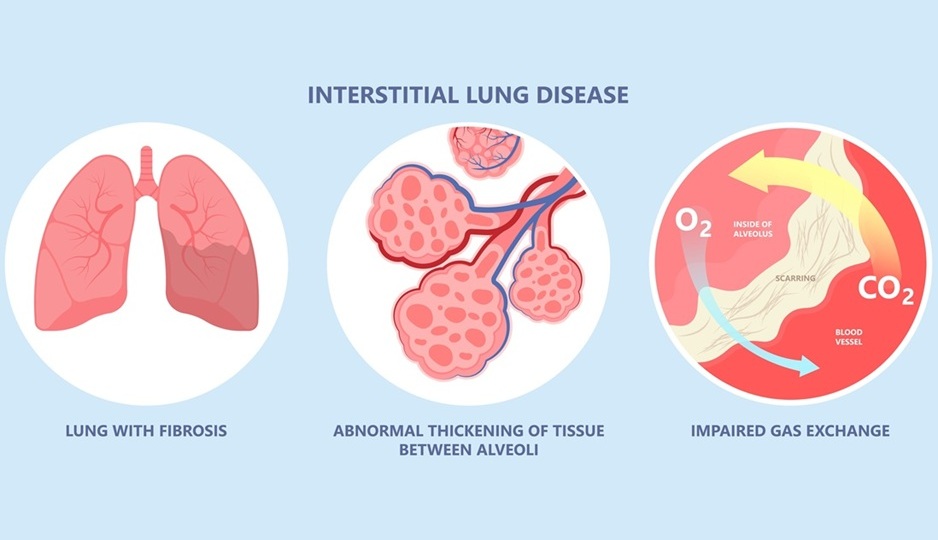Prolonged RBC Storage before Transfusion Increases Extravascular Hemolysis
|
By LabMedica International staff writers Posted on 02 Feb 2017 |
Red blood cell transfusion, the most common procedure performed on hospitalized patients, is an indispensable component of modern medicine and establishing an adequate blood supply depends on the ability to store donated red cells safely.
Some countries have limited the maximum allowable storage duration for red cells to five weeks before transfusion, while in the USA, red blood cells can be stored for up to six weeks, but randomized trials have not assessed the effects of this final week of storage on clinical outcomes.
Scientists at the Columbia University Medical Center and their colleagues randomly assigned a group of 60 healthy volunteers to receive a unit of red blood cells that had been stored for 1, 2, 3, 4, 5, or 6 weeks. The volunteers were then monitored for 20 hours after transfusion. Chromium-51 (51Cr) post transfusion red cell recovery studies were performed and laboratory parameters measured before and at defined times after transfusion.
Routine laboratory parameters were measured and transferrin saturation and total iron binding capacity were calculated from the measured serum iron and unbound iron-binding capacity. Nontransferrin-bound iron was measured using an ultrafiltration assay and this method correlated well with other techniques. Plasma-free hemoglobin was measured by a modified cyanomethemoglobin method. Commercial enzyme-linked immunosorbent assay (ELISA) kits were used to measure Hepcidin and interleukin -6.
The authors found that extravascular hemolysis after transfusion progressively increased with increasing storage time. Longer storage duration was associated with decreasing post-transfusion red cell recovery, decreasing elevations in hematocrit, and increasing serum ferritin. After six weeks of refrigerated storage, transfusion was followed by increases in area under the curve (AUC) for serum iron, transferrin saturation, and nontransferrin-bound iron as compared with transfusion after one to five weeks of storage. Within hours after transfusion, seven of the nine volunteers who received the 6-week-old blood could not appropriately metabolize the damaged cells, thereby releasing large amounts of iron into their bloodstream.
Eldad A. Hod, MD. Assistant Professor of Pathology and senior author of the study said, “Based on the amount of iron circulating in the blood of the volunteers who received six-week-old blood, we'd predict that certain existing infections could be exacerbated. It's estimated that up to 10% to 20% of blood units used for transfusions have been stored for more than five weeks, so the number of patients who are likely to receive a unit of very old blood is substantial.” The study was published in the January 2017 issue of the Journal of Clinical Investigation.
Some countries have limited the maximum allowable storage duration for red cells to five weeks before transfusion, while in the USA, red blood cells can be stored for up to six weeks, but randomized trials have not assessed the effects of this final week of storage on clinical outcomes.
Scientists at the Columbia University Medical Center and their colleagues randomly assigned a group of 60 healthy volunteers to receive a unit of red blood cells that had been stored for 1, 2, 3, 4, 5, or 6 weeks. The volunteers were then monitored for 20 hours after transfusion. Chromium-51 (51Cr) post transfusion red cell recovery studies were performed and laboratory parameters measured before and at defined times after transfusion.
Routine laboratory parameters were measured and transferrin saturation and total iron binding capacity were calculated from the measured serum iron and unbound iron-binding capacity. Nontransferrin-bound iron was measured using an ultrafiltration assay and this method correlated well with other techniques. Plasma-free hemoglobin was measured by a modified cyanomethemoglobin method. Commercial enzyme-linked immunosorbent assay (ELISA) kits were used to measure Hepcidin and interleukin -6.
The authors found that extravascular hemolysis after transfusion progressively increased with increasing storage time. Longer storage duration was associated with decreasing post-transfusion red cell recovery, decreasing elevations in hematocrit, and increasing serum ferritin. After six weeks of refrigerated storage, transfusion was followed by increases in area under the curve (AUC) for serum iron, transferrin saturation, and nontransferrin-bound iron as compared with transfusion after one to five weeks of storage. Within hours after transfusion, seven of the nine volunteers who received the 6-week-old blood could not appropriately metabolize the damaged cells, thereby releasing large amounts of iron into their bloodstream.
Eldad A. Hod, MD. Assistant Professor of Pathology and senior author of the study said, “Based on the amount of iron circulating in the blood of the volunteers who received six-week-old blood, we'd predict that certain existing infections could be exacerbated. It's estimated that up to 10% to 20% of blood units used for transfusions have been stored for more than five weeks, so the number of patients who are likely to receive a unit of very old blood is substantial.” The study was published in the January 2017 issue of the Journal of Clinical Investigation.
Latest Hematology News
- Viscoelastic Testing Could Improve Treatment of Maternal Hemorrhage
- Pioneering Model Measures Radiation Exposure in Blood for Precise Cancer Treatments
- Platelets Could Improve Early and Minimally Invasive Detection of Cancer
- Portable and Disposable Device Obtains Platelet-Rich Plasma Without Complex Equipment
- Disposable Cartridge-Based Test Delivers Rapid and Accurate CBC Results
- First Point-of-Care Heparin Monitoring Test Provides Results in Under 15 Minutes

- New Scoring System Predicts Risk of Developing Cancer from Common Blood Disorder
- Non-Invasive Prenatal Test for Fetal RhD Status Demonstrates 100% Accuracy
- WBC Count Could Predict Severity of COVID-19 Symptoms
- New Platelet Counting Technology to Help Labs Prevent Diagnosis Errors
- Streamlined Approach to Testing for Heparin-Induced Thrombocytopenia Improves Diagnostic Accuracy
- POC Hemostasis System Could Help Prevent Maternal Deaths
- New Test Assesses Oxygen Delivering Ability of Red Blood Cells by Measuring Their Shape
- Personalized CBC Testing Could Help Diagnose Early-Stage Diseases in Healthy Individuals
- Non-Invasive Test Solution Determines Fetal RhD Status from Maternal Plasma
- First-Of-Its-Kind Smartphone Technology Noninvasively Measures Blood Hemoglobin Levels at POC

Channels
Clinical Chemistry
view channel
VOCs Show Promise for Early Multi-Cancer Detection
Early cancer detection is critical to improving survival rates, but most current screening methods focus on individual cancer types and often involve invasive procedures. This makes it difficult to identify... Read more
Portable Raman Spectroscopy Offers Cost-Effective Kidney Disease Diagnosis at POC
Kidney disease is typically diagnosed through blood or urine tests, often when patients present with symptoms such as blood in urine, shortness of breath, or weight loss. While these tests are common,... Read moreMolecular Diagnostics
view channel
Interstitial Lung Disease Test Could Identify Patients Before Symptoms Appear
Interstitial lung disease (ILD) is a group of chronic respiratory disorders that cause inflammation and scarring of lung tissue, often leading to irreversible damage and the need for lung transplants.... Read more
Genomic-First Approach Identifies Rare Genetic Disorders Earlier
Rare genetic disorders (RGDs) affect more than 24 million people in the US, yet many cases remain undiagnosed due to the limitations of traditional testing methods. Current diagnosis typically follows... Read moreImmunology
view channel
Blood Test Tracks Treatment Resistance in High-Grade Serous Ovarian Cancer
High-grade serous ovarian cancer (HGSOC) is often diagnosed at an advanced stage because it spreads microscopically throughout the abdomen, and although initial surgery and chemotherapy can work, most... Read more
Luminescent Probe Measures Immune Cell Activity in Real Time
The human immune system plays a vital role in defending against disease, but its activity must be precisely monitored to ensure effective treatment in cancer therapy, autoimmune disorders, and organ transplants.... Read more
Blood-Based Immune Cell Signatures Could Guide Treatment Decisions for Critically Ill Patients
When a patient enters the emergency department in critical condition, clinicians must rapidly decide whether the patient has an infection, whether it is bacterial or viral, and whether immediate treatment... Read moreMicrobiology
view channel
Fast Noninvasive Bedside Test Uses Sugar Fingerprint to Detect Fungal Infections
Candida bloodstream infections are a growing global health threat, causing an estimated 6 million cases and 3.8 million deaths annually. Hospitals are particularly vulnerable, as weakened patients after... Read more
Rapid Sepsis Diagnostic Device to Enable Personalized Critical Care for ICU Patients
Sepsis is a life-threatening condition that occurs when the body’s response to infection spirals out of control, damaging organs and leading to critical illness. Patients often arrive at intensive care... Read morePathology
view channelNew Imaging Tech to Improve Diagnosis and Treatment of Skin Cancers
Skin cancer is the most common malignancy worldwide, and accurately assessing tumor invasion or treatment response remains a major clinical challenge. Current imaging methods, such as confocal microscopy... Read more
Serially Testing Brain Tumor Samples Reveals Treatment Response in Glioblastoma Patients
Glioblastoma (GBM) is the most aggressive form of brain cancer, known for rapid growth, recurrence, and resistance to treatment. Understanding how tumors respond to therapy remains challenging since imaging... Read more
High-Accuracy Tumor Detection Method Offers Real-Time Surgical Guidance
Pancreatic neuroendocrine neoplasms (PNENs) are rare cancers that affect hormone-producing cells in the pancreas. Although uncommon, their incidence has been increasing, and surgery remains the only curative option.... Read moreTechnology
view channel
AI Algorithm Assesses Progressive Decline in Kidney Function
Chronic kidney disease (CKD) affects more than 700 million people worldwide and remains a major global health challenge. The condition often progresses silently, and many patients remain undiagnosed until... Read more
Taste-Based Influenza Test Could Replace Nasal Swabs with Chewing Gum
Influenza is one of the most dangerous infectious diseases worldwide, claiming around half a million lives each year. What makes it particularly insidious is that flu viruses are contagious even before... Read more
3D Micro-Printed Sensors to Advance On-Chip Biosensing for Early Disease Detection
Early-stage disease diagnosis depends on the ability to detect biomarkers with exceptional sensitivity and precision. However, traditional biosensing technologies struggle with achieving this at the micro-scale,... Read moreIndustry
view channel
Terumo BCT and Hemex Health Collaborate to Improve Access to Testing for Hemoglobin Disorders
Millions of people worldwide living with sickle cell disease and other hemoglobin disorders experience delayed diagnosis and limited access to effective care, particularly in regions where testing is scarce.... Read more
Revvity and Sanofi Collaborate on Program to Revolutionize Early Detection of Type 1 Diabetes
Type 1 diabetes (T1D) is a lifelong autoimmune condition in which the immune system destroys the pancreas’s insulin-producing beta cells, leading to dependence on insulin therapy. Early detection is critical... Read more










 (3) (1).png)







